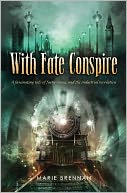Guest Post: Marie Brennan on Fairy Tales

Please welcome Marie, and if you enjoy her post as much as I did, go check out her LiveJournal. Or take a peek at some of her books over on her web page.
#
Jim has unwisely loaned me his podium for a day while he’s out of town, and since this is the week that The Snow Queen’s Shadow [Amazon | B&N | Mysterious Galaxy] launches, I figure I should talk about fairy tales.
I actually have a degree in the subject — nearly had two, before I left graduate school to write full-time. (Yes, they give degrees in folklore.) We studied lots of things, not just fairy tales, but they were always one of my particular interests. So I speak as a semi-expert on the subject when I tell you:
I have no idea what the hell these people were thinking.
You know how you can tell that “The Snow Queen” is a literary fairy tale, rather than a part of the oral tradition? It makes sense. Evil mirror, shard in the eye, everything looks unpleasant; sure, I follow. But what about these opening lines, to a lesser-known Grimm tale? “There was once a little mouse, a little bird, and a sausage, who formed a partnership. They had set up housekeeping, and had lived for a long time in great harmony together.”
Whut?
I’m sure Bruno Bettelheim could explain how this story expresses and resolves the oedipal conflicts of children — but that’s because Bettelheim liked to make up data to support his pet theory. Me, I can’t tell you what the heck that’s supposed to mean. If you think fairy tales make sense, that’s because you’re mostly familiar with the ones that have spent two hundred years going through the rock tumbler of the literary tradition, having their nonsensical edges worn off. We heard things in my folklore classes that simply defied all sense. My professor told us one folktale (non-European, but at this late remove I can’t remember where it came from; maybe Swahili, as that was my professor’s specialty) where the heroine spent most of the tale being chased by the demonic severed head of her grandmother, and then when she finally found a way to destroy it, she got cosmically punished for being a bad grand-daughter. (Moral of the story: you owe filial piety even to demonic severed heads?) If “The Snow Queen” had been an oral tale instead of a literary one, Kay’s mind would have been corrupted by a bit of shell under his fingernail or something.
Sometimes I think the entire thriving sub-genre of fairy-tale retellings is our collective attempt to wrestle the things into making actual sense. Not just the retellings, either; the Grimms’ Kinder- und Hausmärchen went through seven editions in forty-five years (not counting ten editions of the “children’s version”), and while some of that involved adding and removing tales, there was a heck of a lot of editing going on, too. (Despite Jacob urging collectors to record things “without any cosmetic touch-up or addition.”) They mashed tales together, expanded plots, added Christian elements and tried to scrub out French ones; the 1810 manuscript of “Hansel and Gretel” has the children’s mother sending the kids out to die, before it got changed to a step-mother. Can’t have the story reflecting badly on the flower of German motherhood!
It isn’t that there’s no logic to them; folklorists have spent plenty of time analyzing what makes fairy tales go. It’s just that their logic is not our Earth logic. Vladimir Propp laid out a very clear grammar governing the order of events in Russian folktales, and Max Lüthi did an excellent job of describing their aesthetic laws. None of it is much like modern fiction — not even fantasy. Characters in folktales (European ones, at least) don’t bat an eyelash at a talking lion or a mountain made of glass, and if they have to cut off a finger to make a key to open a door, they do it without even saying “ow.” Modern fantasy more often bears a resemblance to the folkloric category of “legend” . . . but that’s a topic for another post.
The thing about fairy tales is, they’re like Rorschach ink-blots. What you see in them depends on who’s looking. And that, I think, is why we go on retelling them: we keep seeing with new eyes, finding new things to amplify or argue with. Their very simplicity and persistent weirdness makes them nigh-infinitely flexible — and at the same time, the shared familiarity of the most common tales means your audience is already part of the conversation you want to have. No wonder we keep coming back to them.






Deborah J. Ross
July 6, 2011 @ 12:11 pm
Great post — I love the Rorschach test analogy!
July 7, 2011 Links and Plugs : Hobbies and Rides
July 6, 2011 @ 11:30 pm
[…] Jim C. Hines (Marie Brennan) on Fairy Tales. […]
Jim C. Hines
July 9, 2011 @ 10:37 pm
The one down side about these guest posts is that I invited three people who are all so much smarter than me, which means I need to up my game once I get back to the blogging…